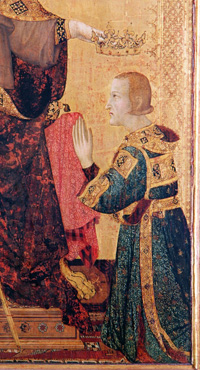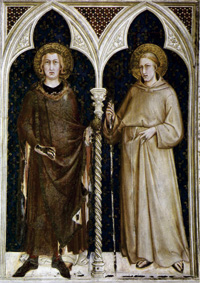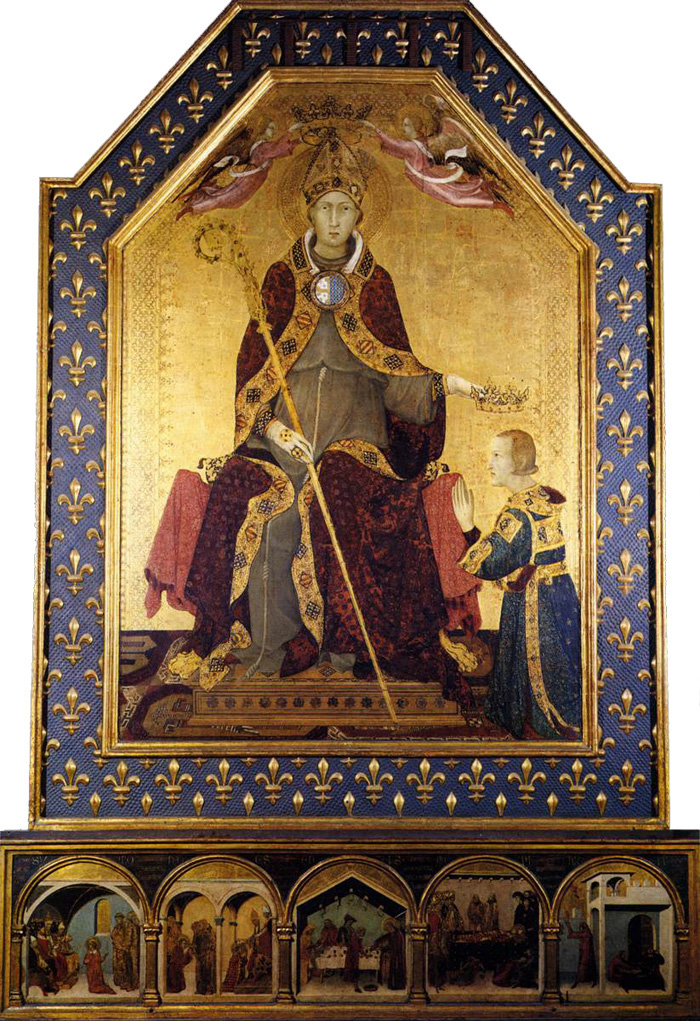 |
|
Simone Martini. Altar of St Louis of Toulouse, c. 1317, tempera on wood, 200 x 188 cm (without predella), Museo Nazionale di Capodimonte, Naples
|
|
Simone Martini | Frontispiece to Petrarch's Virgil |
| Simone Martini was born in 1284. Though little is known of his artistic origins (Vasari gives Giotto as his teacher) he appears as a fully developed master when he painted the Majestas in the Sala del Consiglio of the Siena Town Hall in 1315. Simone Martini spent his last years at the papal court in Avignon, where he arrived in 1340 accompanied by his brother and collaborator, Donato.[1] They came to Avignon as artists and as official representatives of the Church in Siena. Only one signed and dated work is known from this period in France, the Holy Family (1342; Liverpool). Frescoes in the Cathedral are in a ruined state. A group of four small panels with scenes of the Passion and an Annunciation diptych (now in various museums) project a fervent emotionalism and dramatic tension matched only by the late sculpture of Giovanni Pisano. |
| [1] Simone Martini (c. 1284–1344) was an Italian painter born in Siena. He was a major figure in the development of early Italian painting and greatly influenced the development of the International Gothic style. It is thought that Martini was a pupil of Duccio di Buoninsegna, the leading Sienese painter of his time. According to late Renaissance art biographer Giorgio Vasari, Simone was instead a pupil of Giotto di Bondone, with whom he went to Rome to paint at the Old St. Peter's Basilica, Giotto also executing a mosaic there. Martini's brother-in-law was the artist Lippo Memmi. Very little documentation survives regarding Simone's life, and many attributions are debated by art historians. Simone was doubtlessly apprenticed from an early age, as would have been the normal practice. Among his first documented works is the Maestà of 1315 in the Palazzo Pubblico in Siena. A copy of the work, executed shortly thereafter by Lippo Memmi in San Gimignano, testifies to the enduring influence Simone's prototypes would have on other artists throughout the 14th century. Perpetuating the Sienese tradition, Simone's style contrasted with the sobriety and monumentality of Florentine art, and is noted for its soft, stylized, decorative features, sinuosity of line, and courtly elegance. Simone's art owes much to French manuscript illumination and ivory carving: examples of such art were brought to Siena in the fourteenth century by means of the Via Francigena, a main pilgrimage and trade route from Northern Europe to Rome. Simone's other major works include the St. Louis of Toulouse Crowning the King at the Museo di Capodimonte in Naples (1317), the Saint Catherine of Alexandria Polyptych in Pisa (1319) and the Annunciation with St. Margaret and St. Ansanus at the Uffizi in Florence (1333), as well as frescoes in the San Martino Chapel in the lower church of the Basilica of San Francesco d'Assisi. Francis Petrarch became a friend of Simone's while in Avignon, and two of Petrarch's sonnets (Canzoniere 96 and 130) make reference to a portrait of Laura de Noves that Simone supposedly painted for the poet (according to Vasari). A Christ Discovered in the Temple (1342) is in the collections of Liverpool's Walker Art Gallery. Simone Martini died while in the service of the Papal court at Avignon in 1344. |
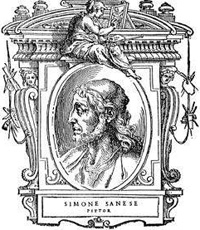 Giorgio Vasari, Simone Martini |
|||
[2] The fresco was painted between Simone's arrival in Avignon sometime between I336 and I340, and his death in that city in 1344. He painted the St. George fresco on the south wall of the porch of Notre Dame-des-Doms and a Virgin and Child with Angels (and Donor) in the tympanum with Christ in Glory above. |
||||
|
||||
|
||||
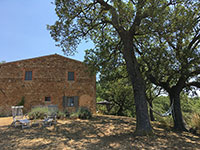 |
||||
Podere Santa Pia
|
Podere Santa Pia
|
The vast and endless golden rolling hills of the Tuscan Maremma
|
||
Early morning light at the private swimming pool at Podere Santa Pia
|
A bigger splash in swimming pool at Podere Santa Pia, southern Tuscany
|
A beautiful early evening by the pool, in the resplendent Tuscan sun, time takes on a languid quality
|
||
 |
||||
| Podere Santa Pia offers an extensive view of a breathtaking panorama all the way to the sea. The beautifully situated terrace has views over what seems like half of southern Tuscany. On clear days you can have a great view of the islands of Montecristo, Elba and even Corsica. |
||||

